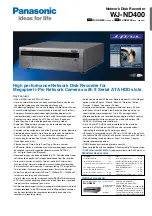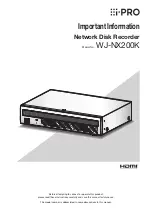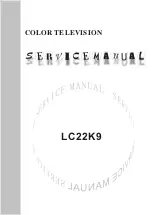
User’s manual · TSQ 310
- 11 - TSQ 310 version_en_1.1 FTE maximal
Next it is attached the identification table (NID/ONID) of the main satellites. You will be able to find more information in
the law ETSI TR 101 162 v1.2.1.
Satellite
Net ID
Original Net ID
Description
Hotbird 13ºE (Eutelsat 13ºE)
318
318
Eutelsat 13ºE System
Astra 19.2ºE
1
1
Astra Satellite Network 19,2ºE
Astra 23ºE
3-25
3-25
Astra n (n=1-23)
Astra 28,2ºE
2
2
Astra Satellite Network 28,2ºE
Nilesat 7ºW
2048
2048
Nilesat 101
Hispasat 30ºW
33
33
Hispasat Network 1
PRO 201
Note: From PRO 201 programmer you can only carry out the programming of a single module, in order to carry
out the programming of several modules at the same time you have to use a mediaMAX EVO or mediaMAX
MINI series field strength meter.
When you connect the PRO 201 programmer, it will proceed to recognize the
module and to show the main menu.
In the main menu are shown the different options for configuring the
transmodulator.
We have to use the “Up” and “Down” buttons of the keyboard in order to move to
the different options, and to get into the submenus we have to press “OK” button.
1. Manual
Inside the “manual” menu there are specified the different options for
setting up the input, output and modulation parameters.
1. This field shows the type of parameter that is selected at the moment.
Options: Input Sat, Out Cab, Out TV.
2. This field shows the parameter that is selected. In order to move
around the different options we have to use the “Up” and “Down” buttons
of the keyboard..
Click on OK to edit the selected parameter and
Right/Left for changing it. Once it is configured press OK.
Satellite input ( Input Sat)
In these options you will be able to configure the input parameters of the satellite
signal:
- L.O. freq (Local oscillator): Selection of the local oscillator that you wish to use:
FI, KU, C, K9750, K10000, K10600, K10700, K10750, K11250, K11300,
K11325 .
- Freq (Input Frequency (MHz)): Transponder frequency that you wish to tune. In order to introduce the frequency, press
the “OK” button and the cursor will be placed over the frequency. With the keys of the cursor, we can move through all the
digits and change the values. Press “OK” in order to save the value.
- Symbol Rate: Symbol speed required by the transponder. In order to introduce the symbol rate, press the “OK” button and
the cursor will be placed over the frequency. With the keys of the cursor, we can move through all the digits and change
the values. Press “OK” in order to save the value.
- Antenna: Feeding/tone towards the LNC. Options: 0V, 13V, 13V+22kHz, 18V, 18V+22KHz, 13V+AUT, 18V+AUT.
- DiseqC: In this option you can set the DiseqC configuration: A, B, C, D and None.
- Auto SR (Auto Symbol Rate): You will be able to select if the detection of the Symbol Rate is going to be Automatic (On)
or Manual (Off).
- In Manual mode (Off), the value of the Symbol Rate should be fixed by the user based on the provider’s
information.
- In Automatic mode (On), the meter will automatically identify the SR when a Satellite carrier is tuned. This
feature is very useful when the provider’s information is unknown.
The SR value found will appear in the field of selection of the SR menu. This value found by the meter could not
correspond exactly to the real broadcast SR, but to a very close value.
Note: The Automatic Symbol Rate feature does not work when the carrier quality is very poor or/and with a very
low Power Level.
-
Mode: This option allows selecting the standard DVB of the transponder that you want to tune. Options: DVB-S1,
DVB-S2 and auto.
TSQ 310 *Input Sat
RF level: 013
>LO Freq: LO KU
Freq: 11509
1
2
TSQ 310
>Manual< Config
Auto
TSQ 310 *Input Sat
Symbol Rate: 27500
>Antenna: 13V+22k
Diseqc: NONE


































